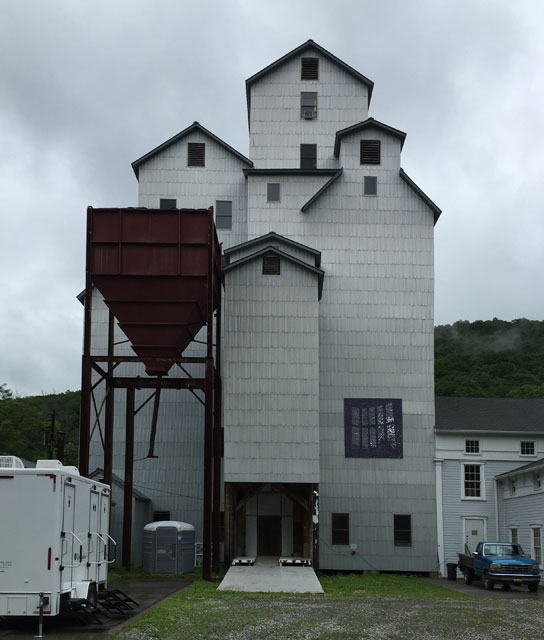
The Wassaic Project exterior with Richard Barlow’s P1020076 on the exterior
Drive about two hours directly north from the top of New York City, and you’ll find yourself without much cell phone reception and in the town of Wassaic. It’s amongst the most beautiful places I’ve visited in the United States, and it’s the home of the Wassaic Project, an artist residency and summer arts festival that was genesis of a really good party. Co-founders Eve Biddle, Bowie Zunino, Jeff Barnett-Winsby and Elan Bogarin first proposed using the Maxon Mill as the site of a festival in 2008. In its first year, it attracted over 500 people. It now attracts over 4,000.
I went up this weekend to check out their annual summer exhibition held in the Maxon Mill. The bulk of the exhibition is made up of work submitted by former residents, but it also includes art selected through their open-call process as well as some art commissioned specifically for the space. Themes emerge and the show is curated in response to those themes.
And the mill is massive. This year the show, called Deep End for its exploration of the strange and dystopian, showcases more than 60 artists on all seven floors of the mill. Monday, I spent the afternoon exploring the show. A few highlights below.
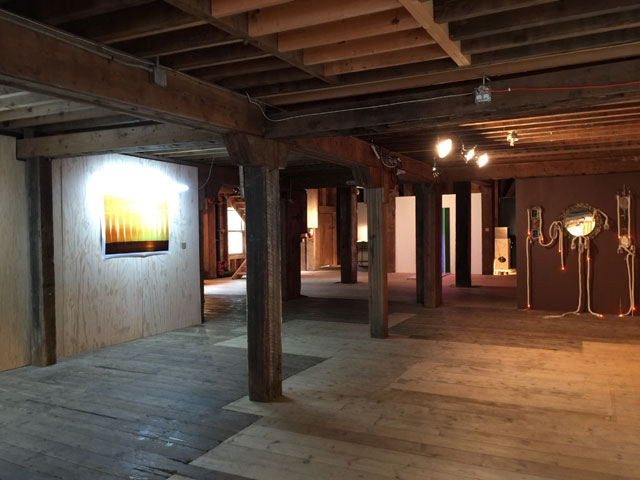
An installation view of the first floor of the mill. Lots of space for the art. Left: Lisa Fairstein, sunset, Right: Amelia Biewald, The Thirteen Bad Habits

An art corner at the entrance. The preserves in the corner are done by Kelly Rae Adams and titled “Salt for Sugar/Sugar for Salt”. Beside this work is Michael Stamm’s painting “Scorpios”. Dystopia here we come!
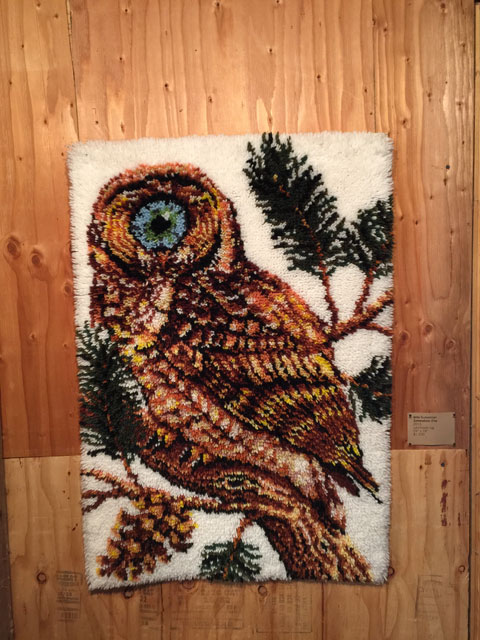
I like to call this latch rug “The eye of the owl.” (It’s actually called Somewhere Else.) I like how fat Jeila Gueramian made the bird. It makes me think the eye must be very helpful when hunting because that owl isn’t gonna move fast.

Some of the works in Deep End were more frightening than others. Rachel Granofsky‘s photographs, for example, are mostly about creating illusory flattened space through painting and set construction. So not very frightening or even weird, but a bit uncanny. Often, as in this piece, Granofsky paints the props so they rescind into the background.
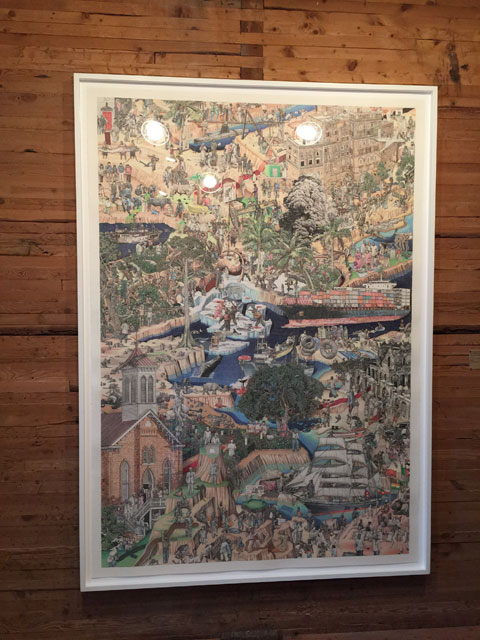
Christopher Daniels’s “And What Happens Next Will Leave You Speechless.” A massive drawing of the world’s atrocities done entirely in crayon and pencil. Incredible.

A detail from that picture shows that none of the figures have faces—they are anonymized to reflect our own disconnection with many of the terrible wrongs that occur around the world. I’m not entirely sure what’s going on with the Apple toaster. Perhaps it’s pointing to poor labor conditions in China?
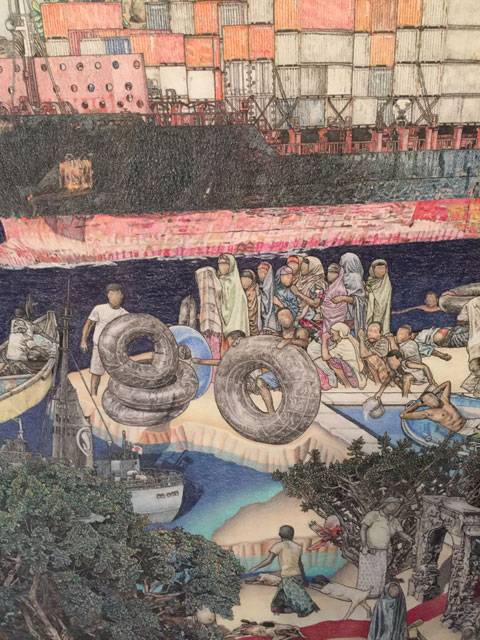
Another detail, this time with tires.

Holden Brown used imagery from 3D architecture programs to create this installation made with artificial turf and fucked-up homes he’s rendered with wood, vinyl, and asphalt. Brown believes technological progress fosters ignorance about the “true nature of human existence” (whatever that may be). I can’t say I find the beliefs driving this work all that sophisticated, but the results are compelling nonetheless. The above image looks like the result of a 3D rendering that was never completed, and in another home, a window becomes a tube-like portal through the home. It, too,was the result of a digital architectural mockup that rendered only the most basic elements.
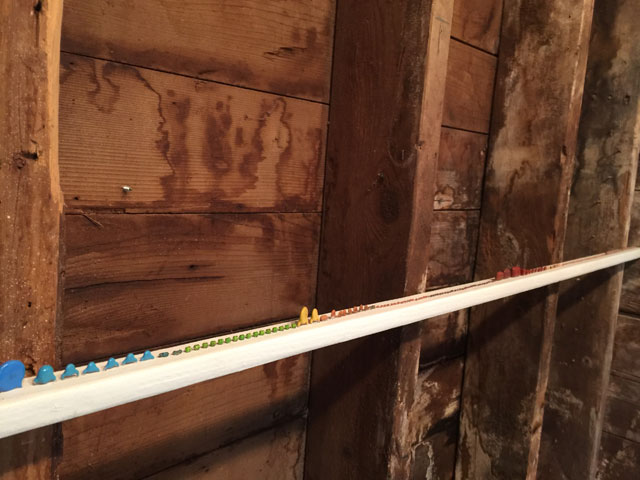
Loren Nosan, “Motherboard, Deep Hollow Rd. Wassaic.” Here we see the computer parts from a motherboard pulled apart and organized into a single color-coded strip. It’s hard to imagine a more complete transformation than this.
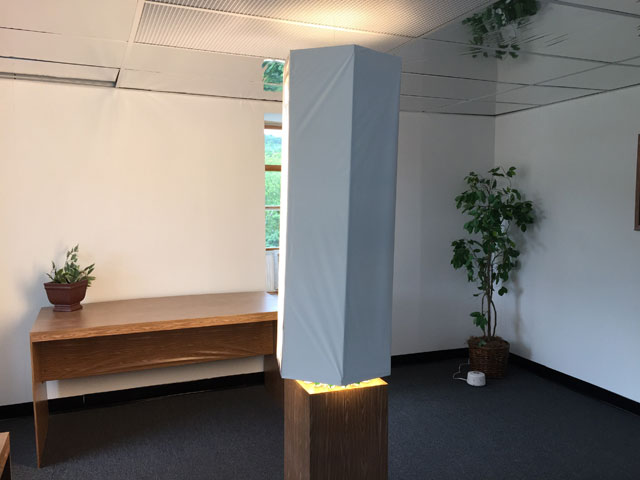
Corina Reynolds “4:15 PM” takes the top floor—and what a prize! She’s transformed the mill into an office space complete with gray carpet, an office-scented air freshener, fake plants, and furniture covered in a fake wooden veneer. The lit tower in the center of the room rotates, turning the mill into a light house at night—an affect augmented by the ceiling tiles she’s made out of reflective mylar. Meanwhile, a video playing a mounted TV screen flashes words over an image of a lighthouse. I imagine they were written by a discontented data entry assistant or secretary; vision, focus…a beacon of hope. Anyway, the whole piece reminds me of the work of Lisa Dillin who juxtaposes the natural and manufactured to create what are often the equivalent of office monuments. This is more like a venus fly-trap for office workers.


Comments on this entry are closed.